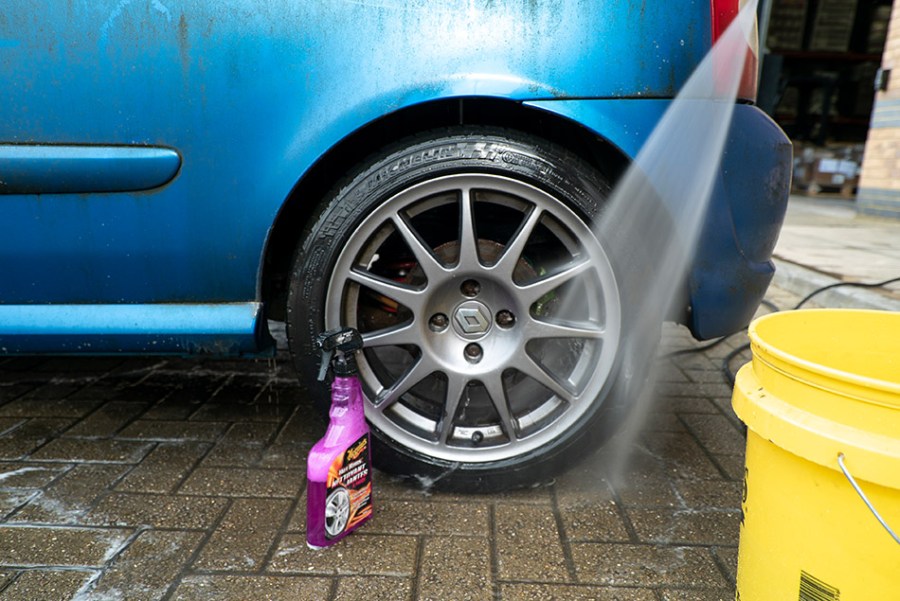Cleaning your alloy wheels should be the first thing you do when detailing your car, here’s our step-by-step guide on how to clean them.
While you can certainly give your wheels a decent clean using some car shampoo, a good wheel cleaner will make the job so much easier, effectively breaking down brake dust and other dirt that’s caked onto them. And if your wheels are especially dirty, a little bit of effort with the right tools will get them looking spotless and factory fresh, regardless of how filthy they might be when you get started. After all, what is car detailing without a proper wheel cleaning process? Here, we’ve broken down the process into six easy steps so you can lean how to clean your alloy wheels like a pro.
Check out our guide to the best alloy wheel cleaners where we pitted 10 of the best against each other to find out which is best.
1. Clean your alloy wheels first when detailing your car
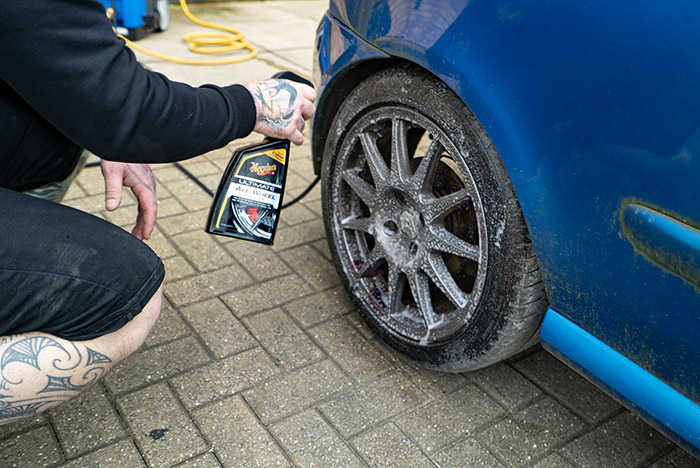
Wheels are the first thing you should be cleaning on your car. They are one of the dirtiest areas on a car; the last thing you want to do is get down to cleaning them when you’ve washed your car already. You could end up splashing wheel cleaner and brake dust residue all over your lovely clean bodywork. Always remember, clean your alloy wheels first. The other benefit of cleaning them first is that everything else you do, like using snow foam and giving the car a final rinse, will only help to clean them further after you’ve got the worst of the dirt off.
2. Pick the right wheel cleaner and spray liberally across alloy wheels
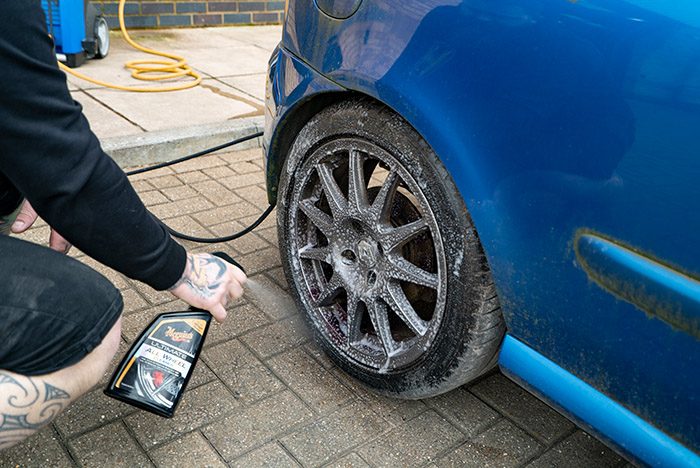
The next thing you need to do is pick the right wheel cleaner for the job. Here, a pH-neutral, acid-free wheel cleaner is being used, which is safe for all wheel finishes. This makes it an excellent all-round choice. Liberally spray the entire wheel and tyre with the wheel cleaner, making sure you get both sides of each spoke. You want to be working with alloy wheels that are cool to the touch. Ideally, this should be out of direct sunlight so that the wheel cleaner doesn’t dry on the surface causing staining.
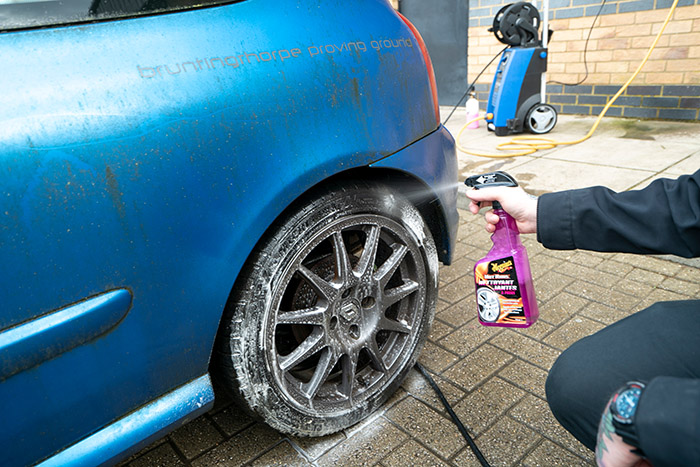
If your alloy wheels are lacquered with a clear top coat, as most are, then you can safely use a more aggressive wheel cleaner.
3. Don’t be alarmed when your wheel cleaner changes colour
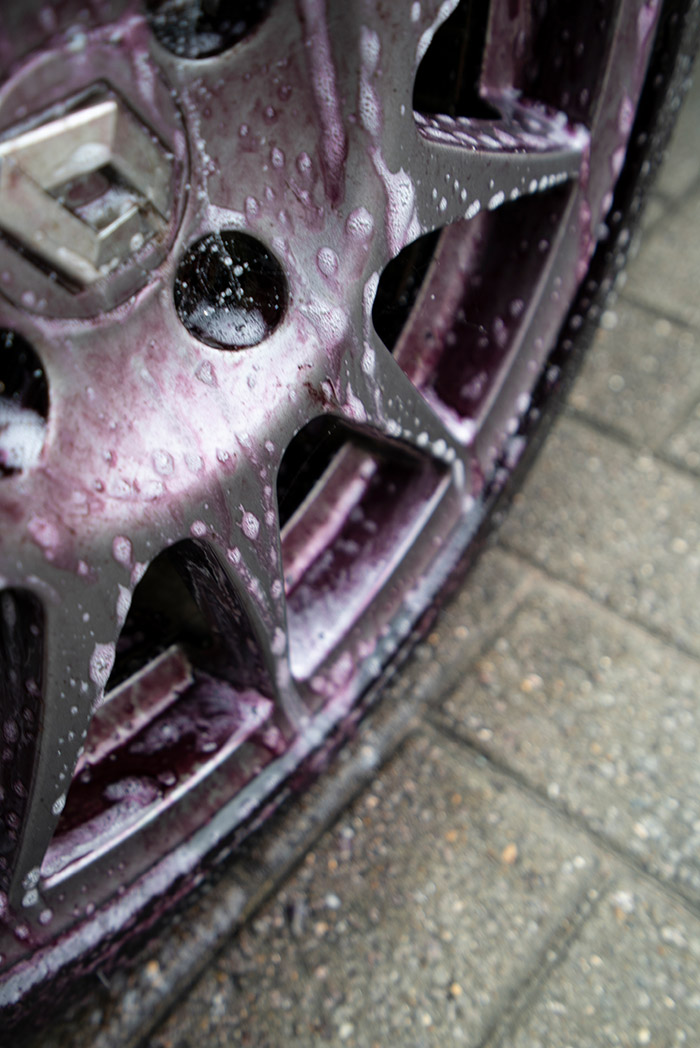
A lot of cleaners will change colour as they react with the iron of the brake dust on your wheels. This gives you a visual indicator that it’s working and breaking down the dirt. Not all wheel cleaners change colour, or some turn more aggressively, but don’t perform as well. As a result, don’t use it’s colour-changing ability as a measure for its effectiveness. Check out our best alloy wheel cleaners guide to find out which product took the top spot in our test.
4. Use a wheel brush to agitate dirt across the whole wheel
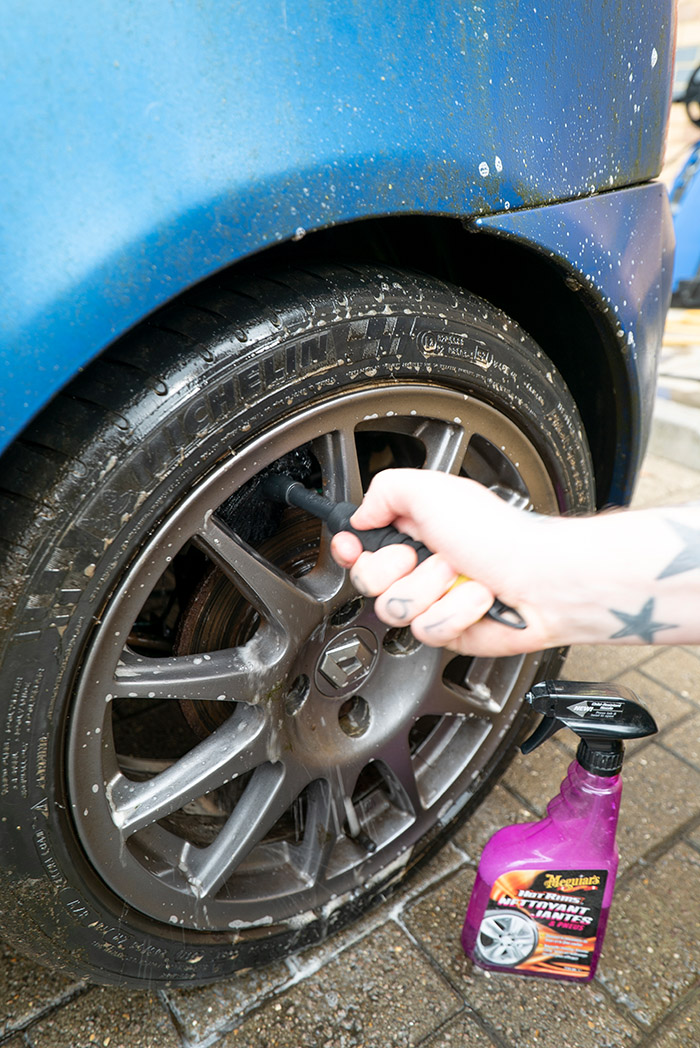
For wheels that are thick with brake dust and other dirt, using a wheel brush to agitate it can help. On this wheel we used a microfibre wheel brush, working in between the spokes, edges and behind the wheel barrel.
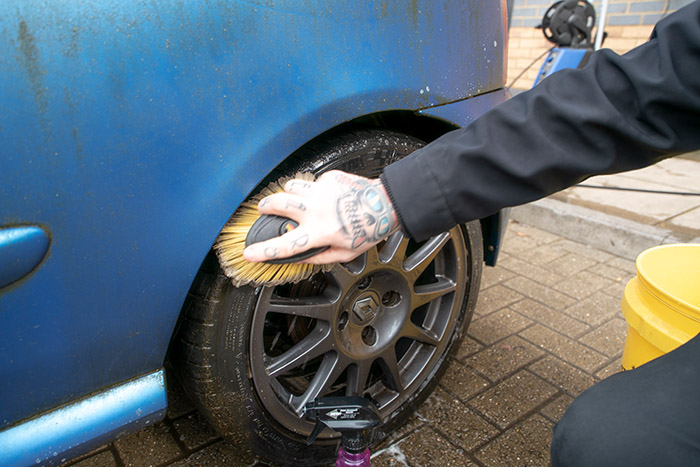
Now we switch to a soft-bristled, non-scratch wheel brush and begin agitating the wheel cleaner on the face of the wheel to help loosen the dirt. Don’t forget about your tyres! All the brake dust and road dirt that sticks to your wheels sticks to the tyres, too, giving you ugly brown sidewalls, so give them a good scrub with the brush to shift all that dirt.
5. Rinse off the product from your alloy wheels

Now it’s time to give both the wheel and tyre a thorough rinse to remove all the dirt. A pressure washer is preferred here, but you can use a garden hose set to the jet spray for increased pressure.
6. And that’s how to detail your alloy wheels like a professional!
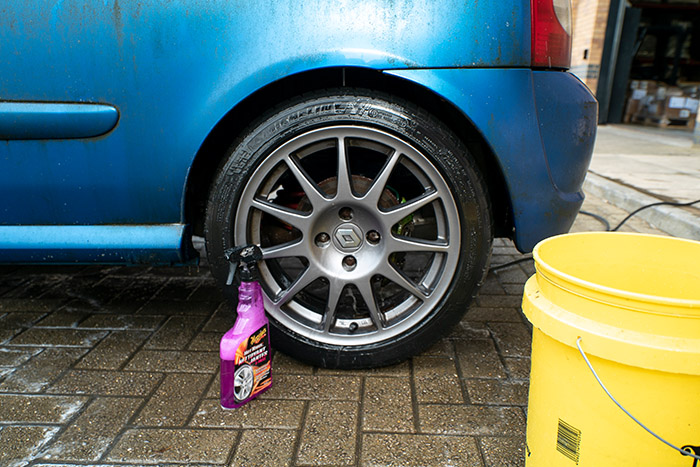
And with that, it’s job done. You’ve now got a wheel that’s clean on the outside and on the inside, and a lovely clean sidewall, too. You’ve now learned how to detail your alloy wheels like a pro, so there’s no excuse for dirty wheels, even during winter!
Relevant content:
Words: Elizabeth de Latour & Matt Bell.

